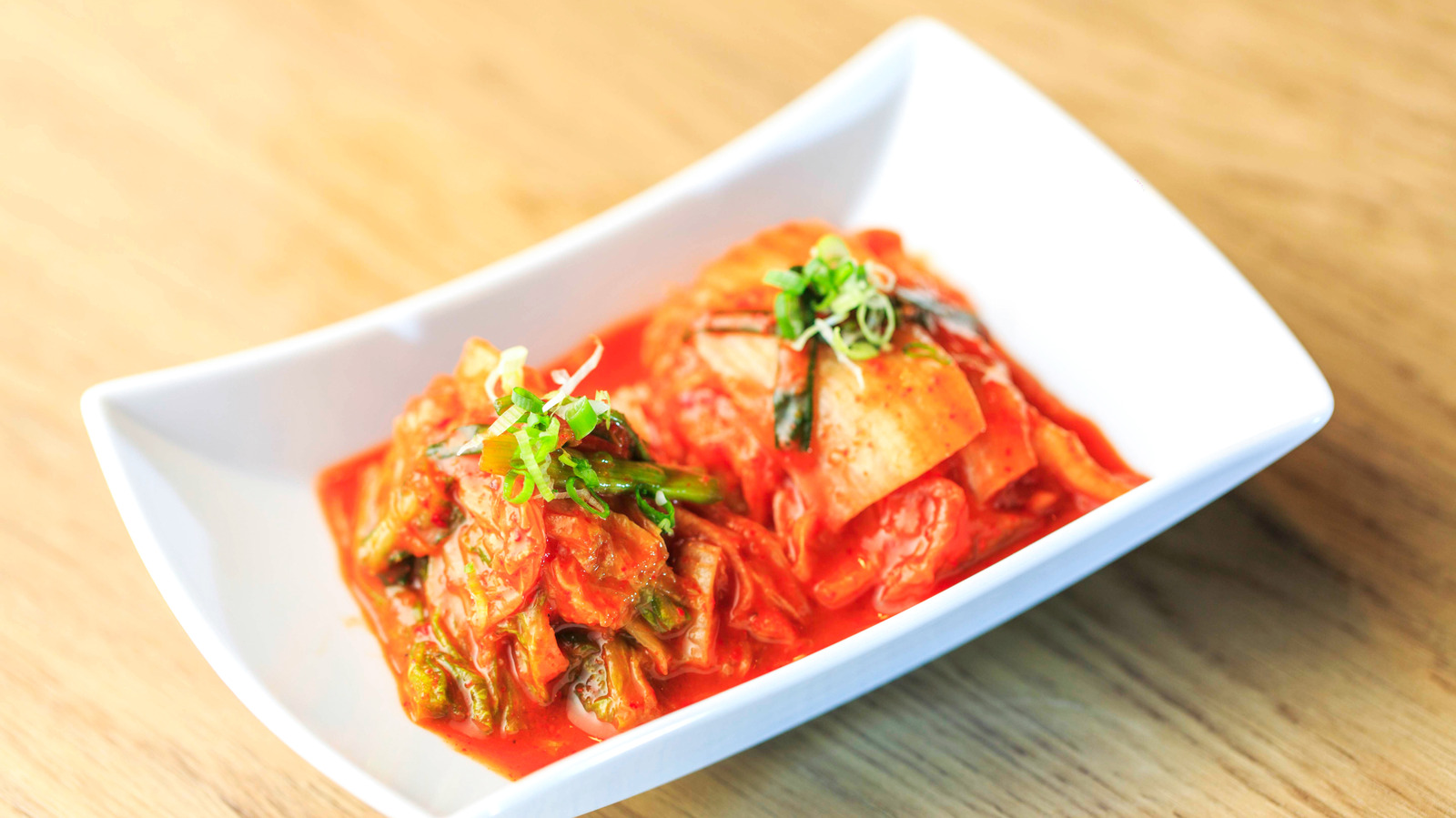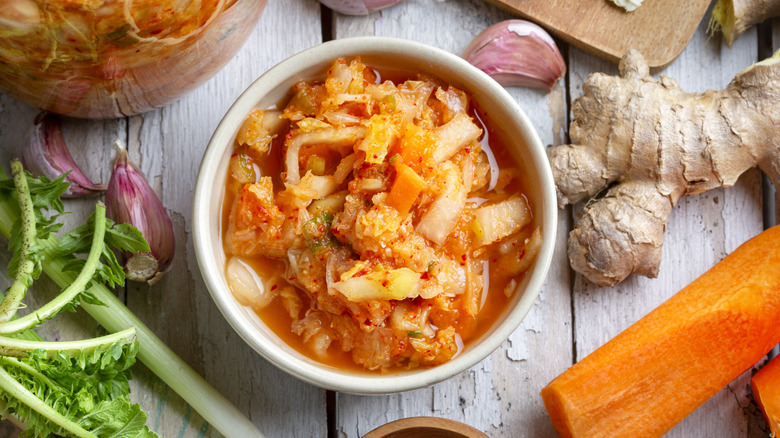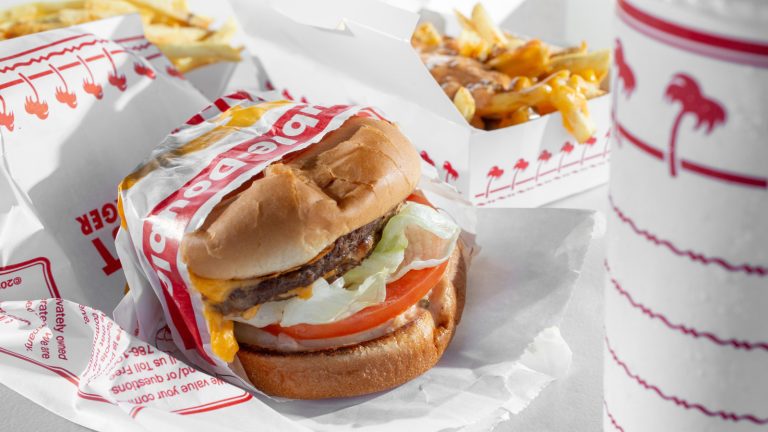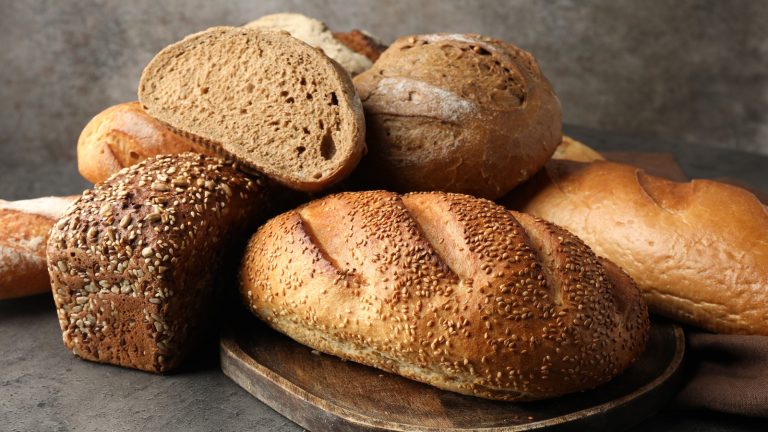We may receive a commission on purchases made from links.
We have seen easily avoidable rookie mistakes happen time and time again when making homemade kimchi and have already gotten expert advice on making a delicious batch at home. One of the most important factors is the container you use to make the kimchi, so we asked Chef Ji Hye Kim (@chefjihyekim on Instagram) of Miss Kim Korean Restaurant which vessel we should be using to make great kimchi.
“Traditionally you’d use onggi jars buried in the cold grounds. But I really don’t recommend that unless you are very serious about kimchi making and have a big family to feed with no fridge space,” Kim says. “A Tupperware container would work, [but] a glass jar or container would be better. You want the lid with a rubber seal to keep the kimchi smell contained in your fridge. As your kimchi ferments, it will create more juice, so you want to fill the container with some room on top to allow for the juice to come.” This juice is vital, as Kim states that the most important part of the kimchi-making experience is having a press on the top of the kimchi in order for the vegetables to stay completely submerged in the juice (and she has found e-jen’s vacuum lid containers helpful in this process).
The perfect fermentation period for your kimchi
The time and place (and the temperature, which should not be overlooked) that you leave kimchi to ferment in will also change the way it tastes. While kimchi can be good for months — or even years — there is a correct way to store it. “After a day or so, you really do want your kimchi in your fridge and not your counter,” Kim says. “As long as the kimchi vegetables stay under the juice and the jar in the fridge, it will keep for a long time.”
However, the amount of time that you leave the kimchi to ferment is actually just up to your taste. In fact, Kim has eaten kimchi that was over 3 years old, as it was stored correctly in the fridge after about a day. “How long you should keep it really depends on your taste,” Kim says. “I like pungent fresh young kimchi [that is] more crunchy, and I like sour old kimchi that has mellowed out.” Kim touches on the fact that many bubbles in a container of kimchi usually means that it was fermented too fast or in a high temperature, but that doesn’t necessarily mean that you can’t eat it. It all comes down to preference.






